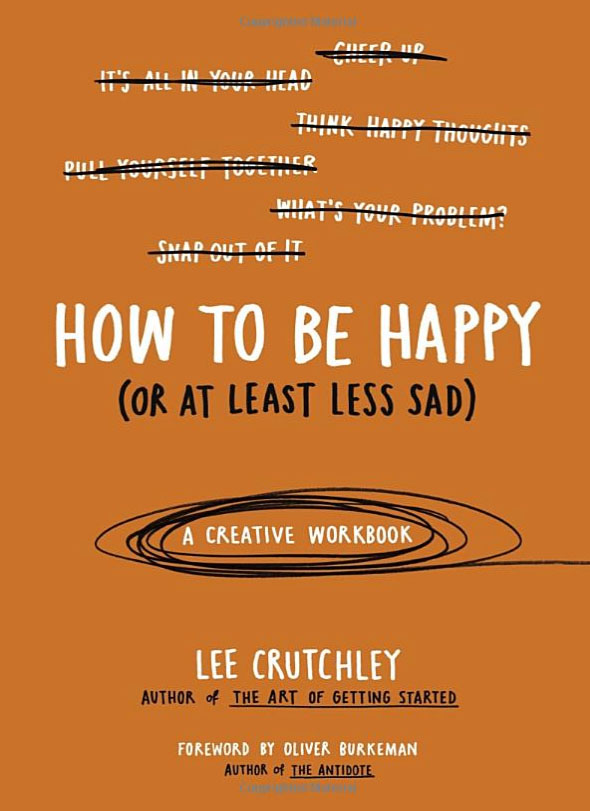The Positivity Project: Finding Your Happy
Book provides path to positivity
April 9, 2018
Life is like salad. Typically, when you order a salad, it has something wrong with it–you ordered Italian dressing, they give you blue cheese. The romaine lettuce is too bitter. The baby tomatoes are running down your face instead of crunching in your mouth. But, you have to always remember that even with all of those yucky components of your salad, there are the croutons. The crispy, garlic–flavored, buttery croutons. My friend says croutons are the best moments in life, when we focus on the positives.
Some people get stuck on the romaine lettuce leaves that taste like battery acid. But some people focus on the croutons. They may need some help digging to the bottom with a fork to find those croutons. One of my favorite forks is a creative workbook/self-help book by Lee Crutchley, How to Be Happy (Or At Least Less Sad).
One page, which is my favorite, has you list 30 different shades of gray, stating that we tend to think that situations happen either black or white–but life really happens in gray areas, so we should focus on the fact that the best won’t always happen, and the worst won’t always happen–but rather life happens somewhere in the middle. With that being said, ever since I’ve recognized that my salad doesn’t always suck, I’ve found that I tend to have more realistic expectations– maybe one runny tomato, a bitter chunk here and there.
Another one of my favorite pages has the reader identify different kinds of thinking distortions that someone could have. For example, catastrophizing: a state of mind where you consistently make the worst of situations, imagining that things will always be a disaster. Another example is fortune telling, which is when you predict that something bad will happen when in fact, you have no evidence to prove that it will. Sticking to these negative mind frames can often raise stress levels and cause you to worsen your situation. We always want to improve, never worsen. There are multiple pages in the book that have this overall theme.
One good page that shows the overall theme of the book is just two boxes, the larger one labeled, “write everything good in this box” and the smaller one labeled, “write everything bad in this box.” It helps you exercise the idea that there are definitely more good things than bad in life. There are many pages that cover this topic throughout the book.
From cover to cover, this book is stacked with positive coping skills, tips and tricks on changing your habits/beliefs so that you can eat a better salad, or imagine eating a better salad if your salad just sucks.
How to Be Happy (Or At Least Less Sad) is great for ages 10+, I would recommend it for anyone who feels like they are struggling with finding their croutons, it helped me and several of my friends grab a fork and start crunching down on the leaves so we could get to the bottom and get those wonderful croutons that were there the whole time, they were just hiding under all that stupid blue cheese.






